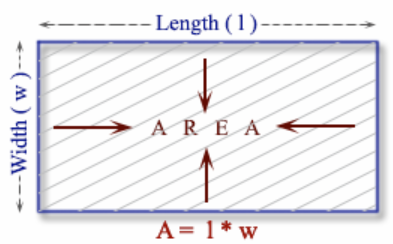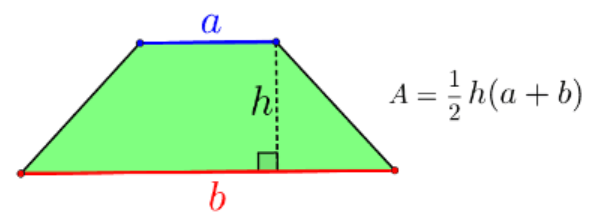User FAQs - Geometry
1) What is Geometry ?
This is all about shapes and their properties.
2) What does intersect mean ?
Intersect means meet.
3) What is a Straight Line ?
The shortest distance between two points.
4) What are Intersecting Lines ?
They are two lines that meet at one point.
Two intersecting lines always form a plane.
5) What are Parallel lines ?
They are two lines that are always the same distance apart, they never meet.
They do not have to be straight lines (eg railway tracks).
6) What are the 3 parallel line rules ?
Alternate angles are the same (z shape)
Allied angles add up to 180 (c or u shape)
Corresponding angles are the same (f shape)
7) What are Perpendicular Lines ?
Two lines that are at right angles to one another.
We say one line is perpendicular to the other.
8) What is an Angle ?
An angle is the space between two intersecting lines.
An angle tells us how far something turns or rotates.
9) What is a Right Angle ?
A right angle is an internal angle which is equal to 90 degrees.
10) How do we measure angles ?
Angles can be measured using a protractor.
The size of an angle is measured in degrees.
11) How many different types of angles are there ?
Acute - Less than 90 degrees (right angle)
Right Angled - 90 degrees
Obtuse - Greater than 90 degrees (right angle) but less than 180 degrees
Straight - 180 degrees
Reflex - Greater than 180 degrees but less than 360 degrees
12) What is the difference between an Interior and an Exterior angle ?
An interior (or internal) angle is an angle inside the shape.
An exterior (or external) angle is an angle outside the shape.
13) What does the sum of the interior angles of a triangle add up to ?
The sum of the three interior angles of a triangle always add up to 180 degrees.
14) What is the 3 Letter Angle Notation ?
We can name angles using three capital letters <ABC
The middle letter is called the vertex of the angle.
15) What are the 6 rules of Geometry ?
Angles in a triangle add up to 180 degrees
Angles on a straight line add up to 180 degrees
Angles in a quadralateral add up to 360 degrees
Angles around a point add up to 360 degrees
Exterior angles of a triangle equals the sum of the opposite interior angles
Isosceles triangles have 2 sides and 2 angles equal
16) What is the definition of a Polygon ?
Any 2D flat shape that is made up of straight lines called sides.
A circle is not a polygon.
17) What Properties do 2D shapes have ?
Sides - These are the straight lines
Angles - The space between the 2 intersecting lines
Corners - (vertex) Where two sides meet to make an angle
18) Can you give some examples of some polygons ?
These can all be regular or irregular.
Triangle - 3 sides
Quadrilateral - 4 sides
Pentagon - 5 sides
Hexagon - 6 sides
Heptagon - 7 sides
Octagon - 8 sides
Nonagon - 9 sides
Decagon - 10 sides
Dodecagon - 12 sides
Icosagon - 20 sides (eye-co-sagon)
19) What is a Regular Polygon ?
A polygon is called regular when all the sides are the same length and all the angles are the same size.
A regular polygon with 3 sides = equalateral triangle
A regular polygon with 4 sides = square
20) What is the sum of the angles in a regular polygon ?
total = (n-2) * 180
Triangle - 3 sides, interior angle = 60, total = 180
Square - 4 sides, interior angle = 90, total = 360
Pentagon - 5 sides, interior angle = 108, total = 540
Hexagon - 6 sides, interior angle = 120, total = 720
Heptagon - 7 sides, interior angle = 128.571, total = 900
Octagon - 8 sides, interior angle = 135, total = 1080
21) What is an Irregular Polygon ?
A polygon that does not have all its sides and angles equal.
22) Can you draw an irregular polygon ?
23) Can you draw an irregular pentagon ?
24) What is a Diagonal ?
A diagonal is a line connecting two corners (or vertices) of a Polygon
25) How many diagonals does a Hexagon have ?
A polygon with N sides will have N(N-3) / 2 diagonals
There are 9.
26) What is a Line of Symmetry ?
The line on which a mirror can be placed to show the reflection of a 2D shape.
27) How many different types of Quadrilateral are there ?
Kite - 2 pairs of equal sides, 1 pair equal angles, 1 line of symmetry
Rhombus - 4 equal length sides, 2 pairs equal angles (special type of Kite), 2 lines of symmetry
Trapezium - 1 pair parallel sides
Parallelogram - 2 pairs equal sides, 2 pairs equal angles, 2 pairs parallel sides
Rectangle - 2 pairs equal sides, all angles are right angles
Square - 4 equal sides, all angles are right angles (special type of rectangle)
28) What is the difference between a Kite and a Rhombus ?
A kite does not have 4 equal sides.
A kite only has 1 line of symmetry.
29) What is the difference between a Rhombus and Parallelogram ?
A parallelogram has opposite sides equal in length.
A rhombus has all four sides equal in length.
30) Which shape has exactly one pair of parallel sides ?
Trapezium
31) Are the following True or False ?
A square is a special type of rectangle - True
A rhombus is a square pushed to the side - True
A rhombus is a special type of parallelogram - True
A rhombus is a special type of kite - True
32) Is a Diamond a shape ?
Yes. It is an example of a rhombus
33) How many different types of Triangle are there ?
Scalene - 3 sides and angles are all different
Equalateral - 3 sides and angles are all equal. Also called a Regular Triangle
Isosceles - 2 sides and 2 angles equal
34) What is a Right Angled Triangle ?
Is a triangle with one 90 degree angle.
It could be scalene or an isosceles triangle.
35) What is an Acute-Angled Triangle ?
Is a triangle with three acute angles.
36) What is an Obtuse-Angled Triangle ?
Is a triangle with one angle greater than 90 degrees but less than 180 degrees.
37) Can you describe Line Symmetry ?
It cuts a 2D shape into two halves.
One half is the reflection of the other half.
Divides it into identical halves.
Draw all the capitals letters and mark on any lines of symmetry.
38) What is a Mirror Line ?
Sometimes a line of symmetry is shown next to a shape.
This type of line is called a mirror line and allows the shape to be reflected symmetrically.
39) How many lines of symmetry do these 2D shapes have ?
Regular Pentagon - 5
Regular Hexagon - 6
Regular Octagon - 8
40) Can you describe Rotational Symmetry ?
Rotational symmetry is when you turn a shape round its centre and it fits exactly on top of itself.
When it still looks the same after some rotation (of less than one full turn).
The number of times it does this is called the order of symmetry.
41) How many different types of Transformation are there ?
Translation - moving the shape left, right, up or down
Reflection - reflecting the shape in a mirror
Rotation - turning the shape round a point
Enlargement - all the distances from the centre of enlargement are multiplied by the scale factor
42) If two 2D shapes are Congruent what does that mean ?
They are the same shape and the same size.
43) If two 2D shapes are Similar what does that mean ?
They have the same interior angles.
44) What are Convex and Concave Shapes ?
Convex shapes have no internal angles greater than 180 degrees.
Concave shapes have at least one internal angle greater than 180 degrees.
45) What is the Perimeter of a 2D shape ?
The distance all the way around the outside of a 2D shape.
46) What is the Perimeter of a 2D shape ?
The total length of all the sides.
It is measured in mm, cm, m or km.
47) What is the Area of a 2D shape ?
The area of a 2D shape is the size that a surface takes up.
The area of a 2D shape is the amount of space inside it.
It is measured in "square" units of measurement.
mm2, cm2, m2, km2
48) What are the four Area Formulas ?
Area of a Rectangle
Area of a Triange
Area of a Parallelogram
Area of a Trapezium
49) Can you calculate the Area of a Rectangle ?
A = length x width
 |
50) Can you calculate the Area of a Triangle ?
A = 1/2 x base x height
51) Can you calculate the Area of a Parallelogram ?
A parallelogram with base B and height H has the same area as a rectangle with base B and height H.
A = base x height
 |
52) Can you calculate the Area of a Trapezium ?
a is the length of one parallel side
b is the length of the other parallel side
A = 1/2 x (a + b) x height
 |
53) What is a Compound Shape ?
Also known as a Composite Shape.
This is a shape that is made up of two or geometric shapes.
54) What is a Geometric Shape ?
These are mathematical shapes that are regular.
55) How can we calculate the area of a composite or compound shape ?
We can partition the shape into smaller rectangles and triangles, calculate the area of these and then add them together.
© 2025 Better Solutions Limited. All Rights Reserved. © 2025 Better Solutions Limited TopPrevNext